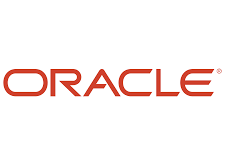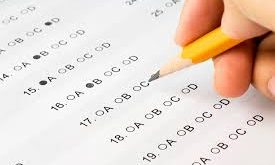Art has always been a reflection of the times, a canvas upon which humanity paints its thoughts, emotions, and visions. From the cave paintings of ancient civilizations to the intricate brushstrokes of the Renaissance, each era has brought its own unique flair to the world of art. However, the 21st century has witnessed a monumental shift—the transition from traditional to digital art. This transformation is more than just a change in medium; it represents a fundamental shift in how we create, share, and experience art. In this article, we’ll explore the evolution of art in the digital age, from its historical roots to its future possibilities.
The Historical Context of Art
The Classical Era of Art
To fully appreciate the digital art revolution, it’s essential to understand where art has come from. The classical era of art, spanning from ancient Greece to the Renaissance, was characterized by a focus on realism, symmetry, and the human form. Artists like Leonardo da Vinci and Michelangelo used traditional tools—brushes, canvases, and paints—to create masterpieces that continue to inspire awe. These works were often commissions by religious institutions or wealthy patrons, serving as both artistic expressions and symbols of power and faith.
The Modern Art Movement
Fast forward to the late 19th and early 20th centuries, and we encounter the modern art movement. This period saw the rise of artists like Picasso, Van Gogh, and Monet, who broke away from the constraints of realism to explore abstraction, emotion, and the subconscious. Modern art introduced new techniques and materials, from the vibrant colors of Impressionism to the fragmented forms of Cubism. It was a time of experimentation, laying the groundwork for the diverse art forms that would emerge in the 21st century.
The Rise of Digital Art
The Digital Revolution
The late 20th century ushered in a new era with the advent of digital technology. The introduction of personal computers, graphic design software like Adobe Photoshop, and digital drawing tablets revolutionized the art world. Artists were no longer confined to physical materials; they could now create, manipulate, and share their work in a virtual space. This digital revolution redefined creativity, offering endless possibilities for innovation and experimentation.
Key Forms of Digital Art
Digital art is an umbrella term encompassing various forms, each with its own unique characteristics. Digital painting, for instance, allows artists to create images directly on a computer using software that mimics traditional painting techniques. 3D modeling and animation have opened up new dimensions for art, enabling the creation of lifelike characters and environments for films, games, and virtual reality experiences. Then there’s interactive installations and VR art, which invite viewers to engage with the artwork in immersive, often participatory ways. These digital forms push the boundaries of what art can be, offering new ways to experience and interact with creativity.
The Role of Social Media and Online Platforms
Social media and online platforms have played a pivotal role in the rise of digital art. Platforms like Instagram, Behance, and ArtStation have democratized art, allowing artists from around the world to showcase their work to a global audience. This has not only increased visibility for emerging artists but has also changed the way art is consumed. No longer confined to galleries or museums, art can now be viewed, shared, and even sold with just a few clicks. The result is a more inclusive and dynamic art world, where creativity knows no bounds.
Comparing Traditional and Digital Art
Techniques and Tools
One of the most significant differences between traditional and digital art lies in the techniques and tools used. Traditional art relies on physical materials—brushes, canvases, paints, and sometimes even unconventional mediums like charcoal or clay. The tactile nature of these materials adds a layer of physicality to the creative process, with each brushstroke or chisel mark contributing to the final piece.
In contrast, digital art is created using electronic devices like tablets, computers, and software programs. These tools offer a level of precision and flexibility that traditional mediums cannot match. For example, digital artists can easily undo mistakes, experiment with different color schemes, and create complex layers without the fear of ruining the entire piece. While the tools are different, the underlying principles of composition, color theory, and technique remain relevant in both forms.
The Experience of Creation
The experience of creating art is another area where traditional and digital forms diverge. Traditional art involves a direct, hands-on approach. The artist interacts with the medium in a physical space, feeling the texture of the paint, the resistance of the brush, and the weight of the canvas. This tactile experience is often described as meditative, with the artist fully immersed in the process.
Digital art, on the other hand, offers a different kind of immersion. While it lacks the tactile elements of traditional art, it compensates with its versatility and convenience. Digital artists can work from virtually anywhere, with an entire studio’s worth of tools available at their fingertips. The creative process is often faster and more efficient, allowing for greater experimentation and iteration. However, some argue that this convenience comes at the cost of the “soul” of the artwork, a debate that continues to spark discussions within the art community.
The Impact of Digital Art on the Art World
The Evolution of Art Exhibitions
The rise of digital art has significantly impacted how art is exhibited and shared with the world. Traditional art exhibitions typically take place in physical galleries, where viewers can experience the artwork in person. However, digital art has expanded the possibilities for exhibitions, moving beyond the confines of brick-and-mortar spaces.
Virtual exhibitions have become increasingly popular, especially in the wake of global events like the COVID-19 pandemic. These online showcases allow artists to reach a global audience without the limitations of geographical location. Viewers can explore digital galleries from the comfort of their homes, often through immersive experiences that mimic walking through a physical space. This evolution has made art more accessible and has broadened the reach of artists worldwide.
The Market for Digital Art
The digital art market has also seen significant growth, particularly with the rise of NFTs (Non-Fungible Tokens). NFTs are unique digital assets that represent ownership of a specific piece of digital art. Unlike traditional art, which is often one-of-a-kind, digital art can be easily replicated. NFTs address this by providing a way to verify the authenticity and ownership of digital works, making them valuable collectibles.
The introduction of NFTs has opened up new revenue streams for digital artists, allowing them to monetize their work in ways that were previously impossible. However, this new market comes with its challenges, including concerns over the environmental impact of blockchain technology and the speculative nature of NFT investments. Despite these challenges, the digital art market continues to grow, with NFTs becoming a significant force in the art world.
The Intersection of Technology and Art
AI and Machine Learning in Art
As technology continues to evolve, so too does its influence on art. AI (Artificial Intelligence) and machine learning are being increasingly used to create and enhance art. AI algorithms can analyze vast amounts of data to generate new artworks, often blending styles and techniques in ways that would be impossible for a human artist. This has led to the creation of AI-generated art, which raises questions about creativity, authorship, and the role of the artist.
While some view AI-generated art as a fascinating new frontier, others are concerned about its implications. Is art created by a machine truly “art”? Does it have the same value as a piece created by a human artist? These are just some of the ethical considerations that come into play as AI continues to make its mark on the art world.
The Future of Augmented Reality (AR) and Virtual Reality (VR) in Art
Another exciting development at the intersection of technology and art is the use of Augmented Reality (AR) and Virtual Reality (VR). These technologies offer immersive experiences that blend the physical and digital worlds, allowing viewers to interact with art in entirely new ways. AR and VR can transform traditional art forms, turning static images into dynamic, interactive experiences. For example, an AR app might allow a viewer to see a painting come to life on their smartphone screen, while a VR headset could transport them into a fully realized digital environment where they can explore a 3D sculpture from every angle.
The potential of AR and VR to revolutionize the art world is immense, offering new ways to experience, create, and share art. As these technologies continue to develop, they will likely play an increasingly important role in the future of art.
Challenges and Criticisms of Digital Art
Issues of Authenticity and Originality
Despite its many advantages, digital art is not without its challenges and criticisms. One of the most significant concerns is the issue of authenticity and originality. In the digital world, it’s easy to replicate and share artwork, leading to concerns about piracy and copyright infringement. This has sparked debates over what constitutes “real” art and whether digital creations can be considered as original as their traditional counterparts.
Furthermore, the ease of creating digital art has led some to question its value. With the ability to undo mistakes and experiment endlessly, some critics argue that digital art lacks the “soul” and effort that traditional art requires. However, many digital artists counter this by emphasizing the skill and creativity involved in mastering digital tools and producing high-quality work.
The Environmental Impact
Another criticism of digital art is its environmental impact. While traditional art relies on physical materials, digital art requires electronic devices, many of which have a significant carbon footprint. The energy consumption of computers, tablets, and servers, as well as the environmental cost of producing and disposing of electronic waste, are all concerns that need to be addressed.
Some artists and platforms are taking steps toward more sustainable practices, such as using renewable energy sources and promoting digital minimalism. As the digital art world continues to grow, finding ways to reduce its environmental impact will be crucial.
The Future of Art in a Digital Age
The Continuing Evolution
As we look to the future, it’s clear that art will continue to evolve alongside technology. The next decade will likely see even more integration of digital tools and techniques, with artists pushing the boundaries of what’s possible. From AI-generated masterpieces to immersive AR and VR experiences, the future of art promises to be as diverse and dynamic as ever.
Bridging the Gap Between Traditional and Digital Art
Despite the rise of digital art, traditional art is far from obsolete. In fact, many artists are finding ways to bridge the gap between the two, creating hybrid forms that combine traditional techniques with digital innovations. This collaborative approach allows for the preservation of traditional art forms while embracing the possibilities of the digital age. By blending the best of both worlds, artists can continue to create works that are both timeless and cutting-edge.
Principles of Art
The principles of art are the foundational guidelines that artists use to organize and arrange elements in their work. These include balance, contrast, emphasis, movement, pattern, rhythm, and unity. Each principle plays a crucial role in creating a harmonious and visually appealing composition. For instance, balance refers to the distribution of visual weight in a piece, while contrast involves the juxtaposition of differing elements to create visual interest. Together, these principles help artists convey their intended message and evoke emotions in the viewer.
Fundamentals of Art
The fundamentals of art are the essential building blocks that form the basis of any artwork. These include elements like line, shape, form, color, value, space, and texture. Understanding these basics is crucial for any artist, as they are used to construct and define visual compositions. For example, lines can create movement, shapes can define space, and color can evoke mood. Mastery of these fundamentals allows artists to effectively communicate ideas and create works that resonate with their audience.
Conclusion
The evolution of art from canvas to digital is a testament to humanity’s boundless creativity and adaptability. While digital art offers new tools, techniques, and platforms, it doesn’t diminish the value of traditional art. Instead, it expands the possibilities for artistic expression, allowing artists to explore new frontiers while honoring the rich history of art. As we move further into the 21st century, it’s essential to embrace both the old and the new, recognizing that art in all its forms continues to be a powerful reflection of our time.
FAQs
What is the main difference between traditional and digital art?
The main difference lies in the tools and techniques used. Traditional art involves physical materials like paint, canvas, and brushes, while digital art uses electronic devices and software to create images.
Can digital art be considered “real” art?
Yes, digital art is considered “real” art. It involves creativity, skill, and artistic expression, just like traditional art forms. The medium may differ, but the core principles of art remain the same.
How has social media influenced the art world?
Social media has democratized art by allowing artists to showcase their work to a global audience. It has also changed the way art is consumed, with more people discovering and sharing art online.
What are NFTs, and how do they relate to digital art?
NFTs (Non-Fungible Tokens) are unique digital assets that represent ownership of a specific piece of digital art. They have become a popular way to buy, sell, and trade digital artworks, providing a way to verify authenticity and ownership.
Will traditional art become obsolete in the future?
No, traditional art will not become obsolete. While digital art is gaining popularity, traditional art forms continue to hold value and significance. Many artists are also combining traditional and digital techniques to create new, innovative works.







